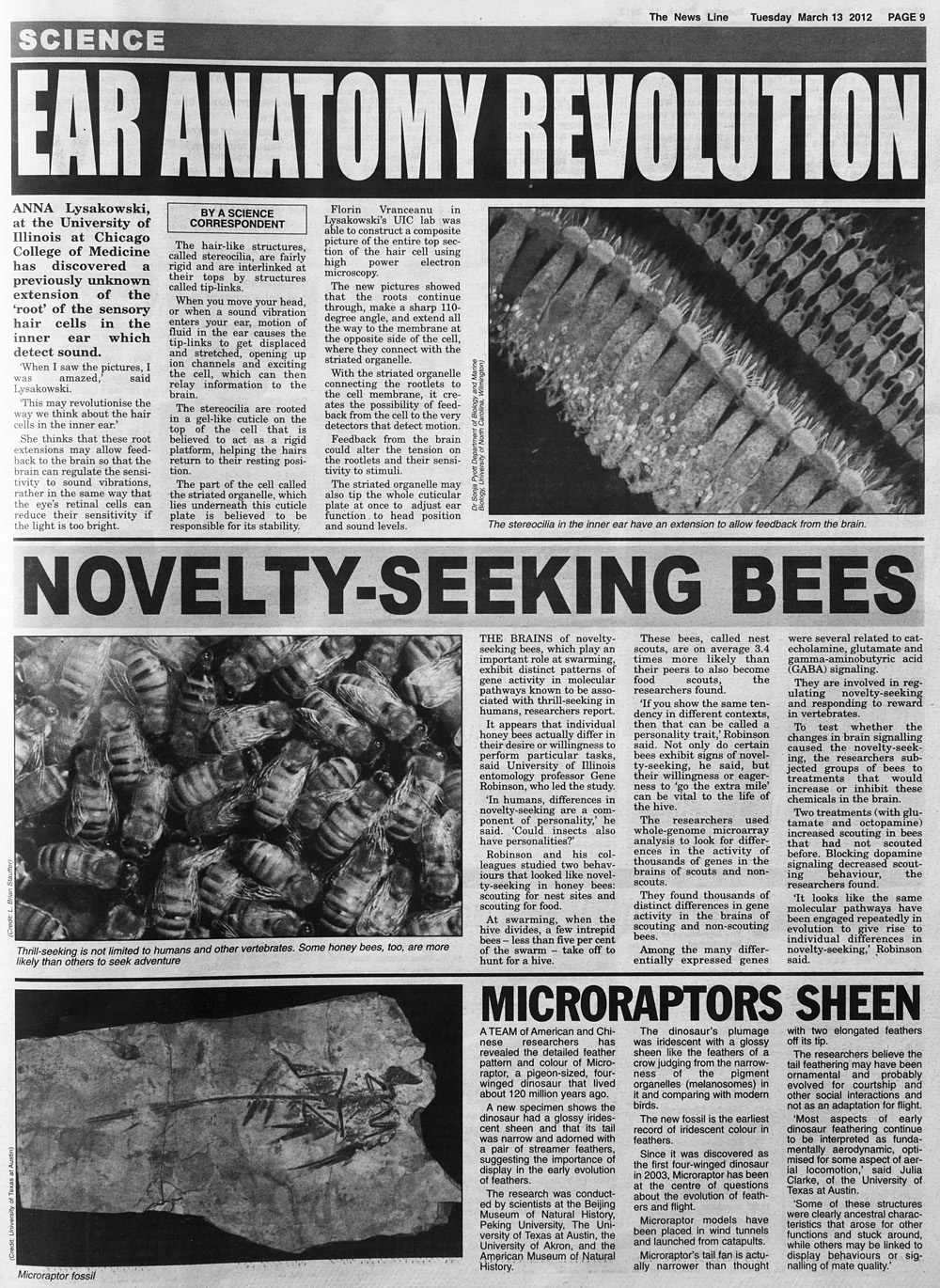 |
|
| The News Line Tuesday March 13 2012
PAGE 9 SCIENCE EAR ANATOMY REVOLUTION ANNA Lysakowski, at the University of Illinois at Chicago College of Medicine has discovered a previously unknown extension of the 'root' of the sensory hair cells in the inner ear which detect sound. 'When I saw the pictures, I was amazed,' said Lysakowski. 'This may revolutionise the way we think about the hair cells in the inner ear.' She thinks that these root extensions may allow feedback to the brain so that the brain can regulate the sensitivity to sound vibrations, rather in the same way that the eye's retinal cells can reduce their sensitivity if the light is too bright. The hair-like structures, called stereocilia, are fairly rigid and are interlinked at their tops by structures called tip-links. When you move your head, or when a sound vibration enters your ear, motion of fluid in the ear causes the tip-links to get displaced and stretched, opening up ion channels and exciting the cell, which can then relay information to the brain. The stereocilia are rooted in a gel-like cuticle on the top of the cell that is believed to act as a rigid platform, helping the hairs return to their resting position. The part of the cell called the striated organelle, which lies underneath this cuticle plate is believed to be responsible for its stability, Florin Vranceanu in Lysakowski's UIC lab was able to construct a composite picture of the entire top section of the hair cell using high power electron microscopy, The new pictures showed that the roots continue through, make a sharp 110- degree angle, and extend all the way to the membrane at the opposite side of the cell, where they connect with the striated organelle. With the striated organelle connecting the rootlets to the cell membrane, it creates the possibility of feedback from the cell to the very detectors that detect motion. Feedback from the brain could alter the tension on the rootlets and their sensitivity to stimuli. The striated organelle may also tip the whole cuticular plate at once to adjust ear function to head position and sound levels. http://www.wrp.org.uk/ |